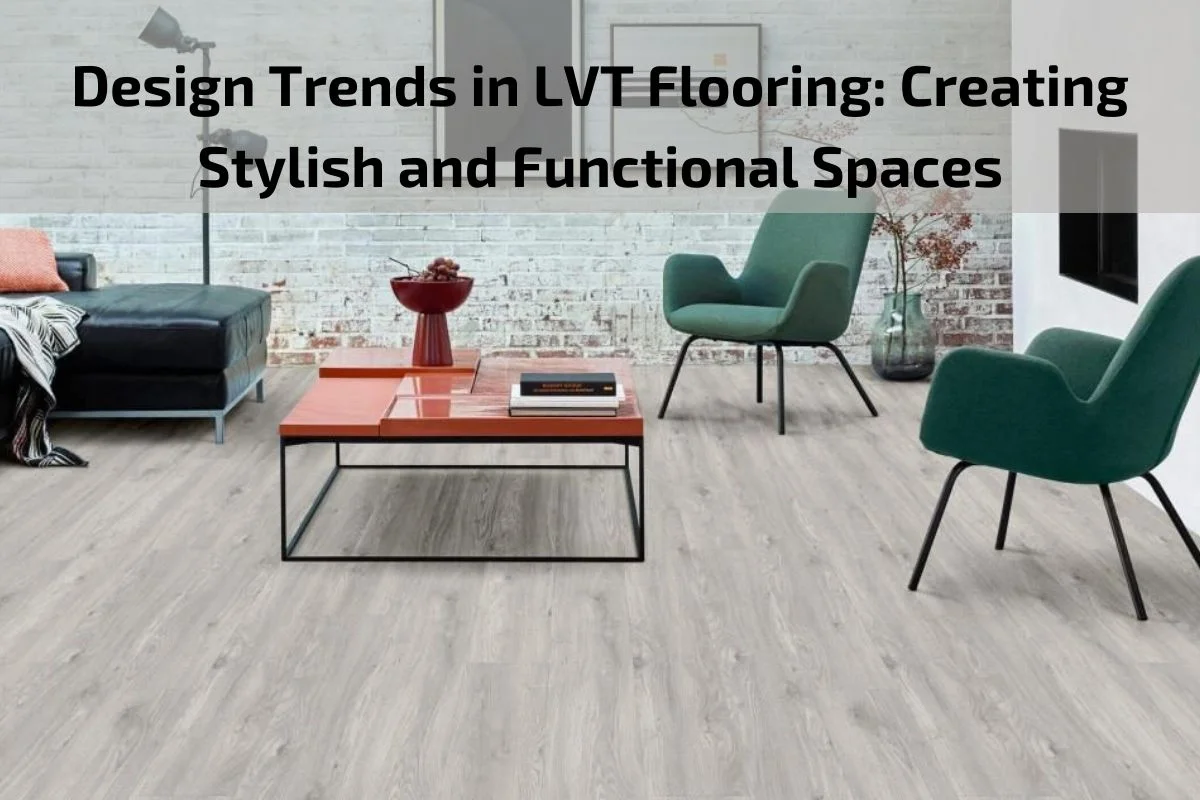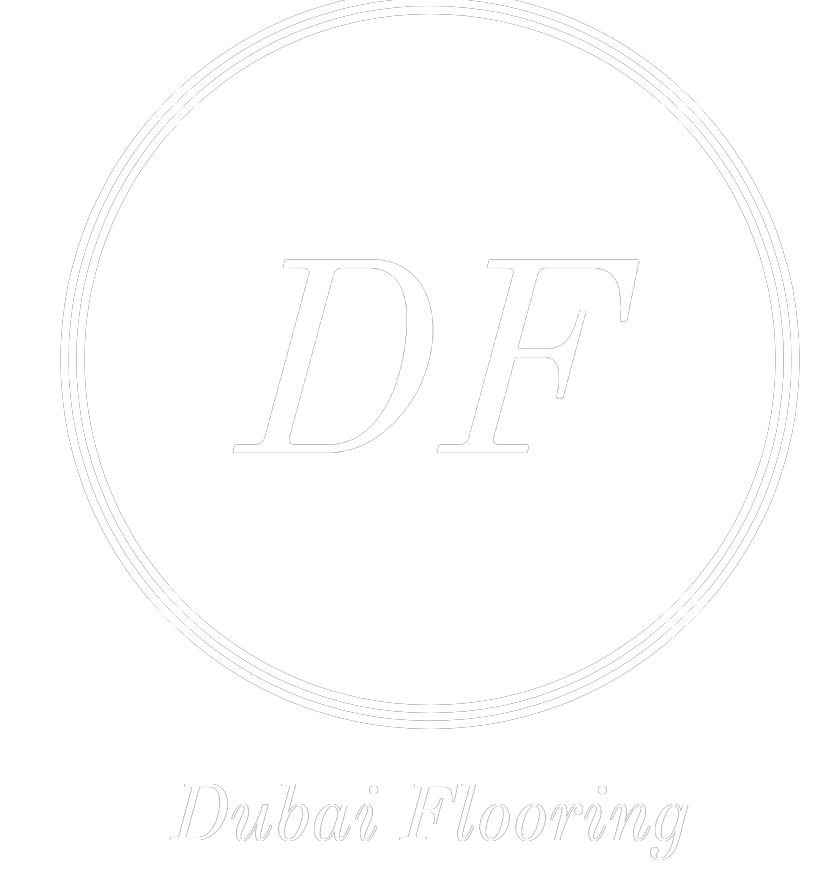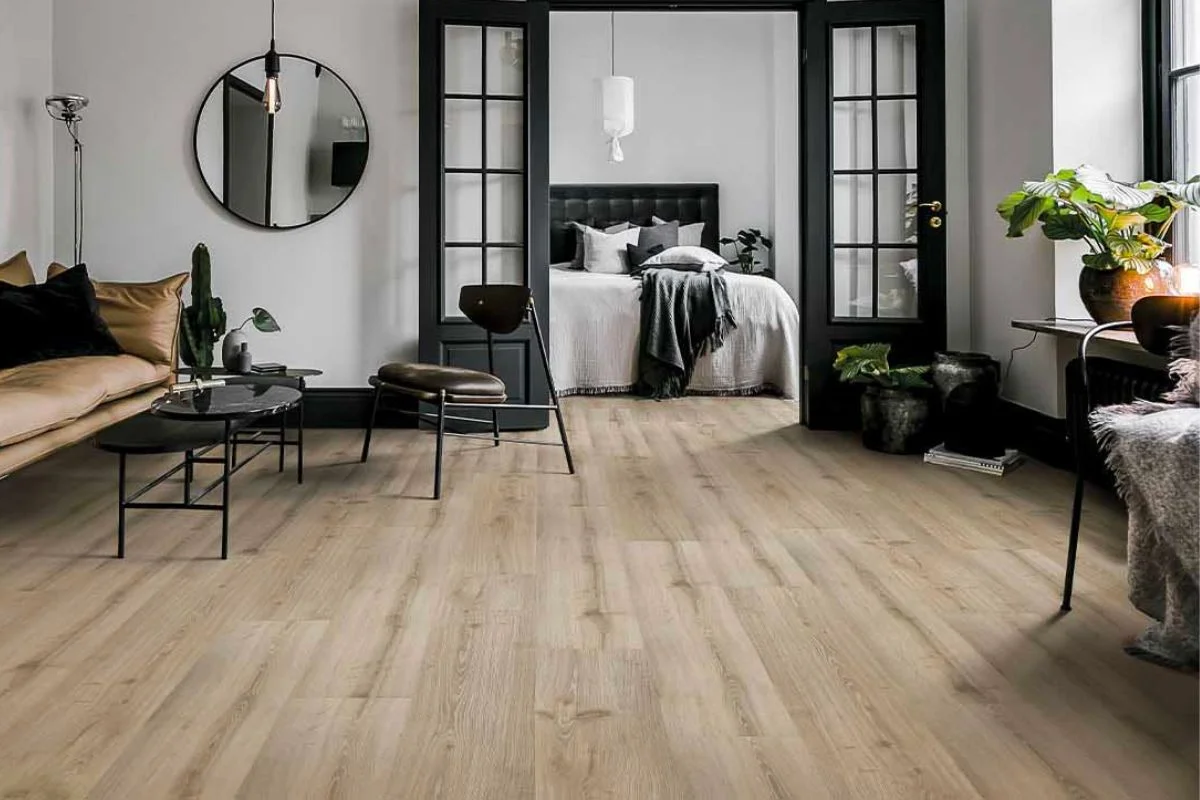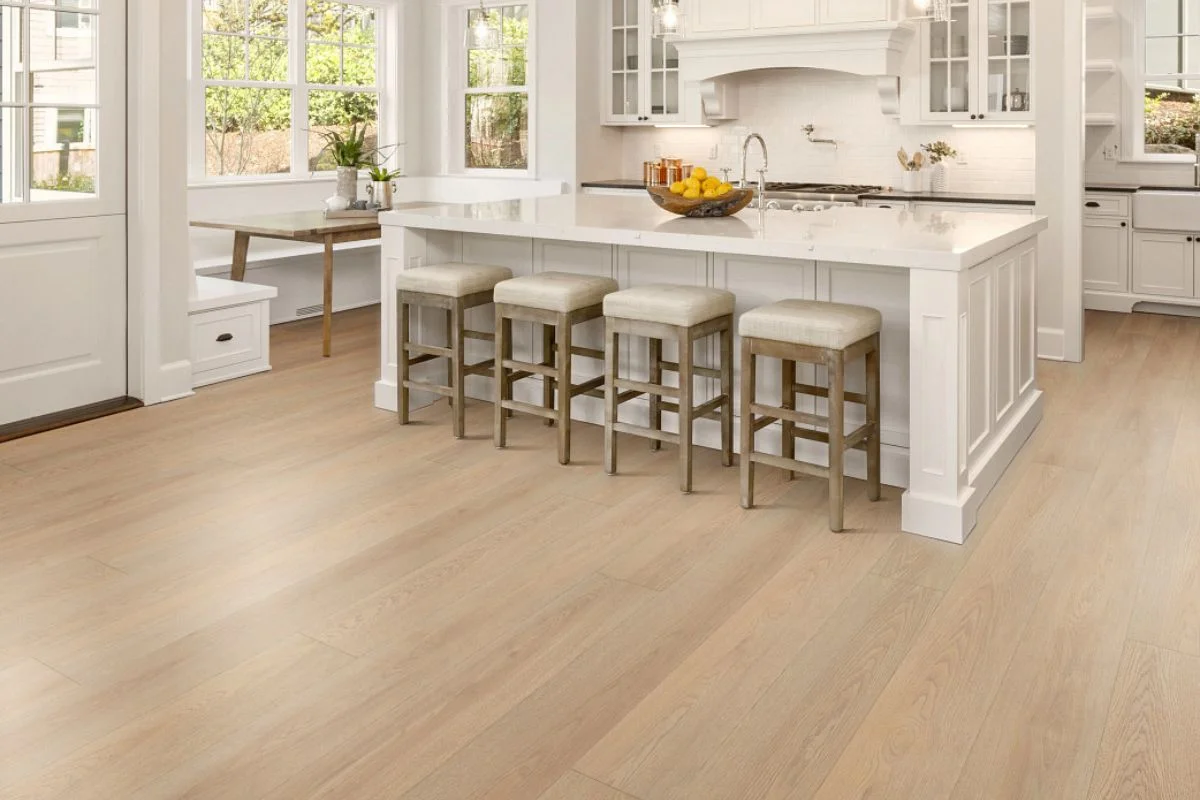Blog
 In the realm of interior design, flooring serves as the foundational element that sets the tone for a space. Among the myriad of flooring options available, Luxury Vinyl Tile (LVT) has emerged as a versatile and stylish choice for creating both aesthetically pleasing and functional environments.
As design trends continue to evolve, LVT flooring has risen in popularity due to its remarkable versatility, durability, and visual appeal. From residential interiors to commercial settings, LVT offers a wide array of design possibilities that seamlessly blend style with practicality.
In this exploration of design trends in LVT flooring, we delve into the latest innovations and inspirations that are shaping modern interiors. From natural wood and stone textures to bold patterns and colors, LVT flooring offers endless possibilities for creating spaces that are both chic and timeless.
Join us as we uncover the key design trends that are revolutionizing LVT flooring, transforming spaces into stylish and functional havens. Whether you’re a homeowner, interior designer, or business owner, this journey through the world of LVT flooring trends promises to inspire and elevate your design aspirations.
In the realm of interior design, flooring serves as the foundational element that sets the tone for a space. Among the myriad of flooring options available, Luxury Vinyl Tile (LVT) has emerged as a versatile and stylish choice for creating both aesthetically pleasing and functional environments.
As design trends continue to evolve, LVT flooring has risen in popularity due to its remarkable versatility, durability, and visual appeal. From residential interiors to commercial settings, LVT offers a wide array of design possibilities that seamlessly blend style with practicality.
In this exploration of design trends in LVT flooring, we delve into the latest innovations and inspirations that are shaping modern interiors. From natural wood and stone textures to bold patterns and colors, LVT flooring offers endless possibilities for creating spaces that are both chic and timeless.
Join us as we uncover the key design trends that are revolutionizing LVT flooring, transforming spaces into stylish and functional havens. Whether you’re a homeowner, interior designer, or business owner, this journey through the world of LVT flooring trends promises to inspire and elevate your design aspirations.
Definition and composition of Luxury Vinyl Tile [ LVT Flooring]
Luxury Vinyl Tile (LVT) flooring is a type of resilient flooring that replicates the appearance of natural materials such as hardwood, stone, or ceramic tile. It is known for its durability, versatility, and aesthetic appeal, making it a popular choice for both residential and commercial spaces.
Composition:
Vinyl Core: The core layer of LVT flooring is typically composed of vinyl, a synthetic material known for its resilience and water resistance. This vinyl core provides stability and dimensional stability to the flooring, ensuring it maintains its shape and structure over time.
Print Film Layer: Above the vinyl core, there is a print film layer that features high-resolution images of natural materials such as wood grain, stone texture, or ceramic tile patterns. This layer is responsible for giving LVT flooring its realistic appearance and visual appeal.
Wear Layer: The wear layer is a clear protective coating applied over the print film layer to enhance durability and resistance to scratches, stains, and fading. The thickness of the wear layer varies depending on the quality and durability of the LVT flooring product.
Backing Layer: The backing layer of LVT flooring provides additional stability and support to the flooring planks or tiles. It may consist of various materials such as PVC (polyvinyl chloride) or fiberglass, depending on the manufacturer and product specifications.
Key Features:
Water Resistance: LVT flooring is highly resistant to moisture, making it suitable for installation in areas prone to spills, moisture, and humidity, such as kitchens, bathrooms, and basements.
Durability: LVT flooring is known for its durability and resilience, able to withstand heavy foot traffic, impact, and wear and tear without losing its integrity or appearance.
Versatility: LVT flooring comes in a wide range of designs, styles, colors, and patterns, allowing for endless customization options to suit various design preferences and interior aesthetics.
Ease of Installation: LVT flooring is designed for easy installation, with options for glue-down, click-lock, or loose lay installation methods. It can be installed over most existing subfloors, including concrete, plywood, and existing flooring materials.
Low Maintenance: LVT flooring requires minimal maintenance and upkeep, with routine sweeping, vacuuming, and occasional mopping sufficient to keep it clean and looking its best.
Importance of LVT Flooring in interior design
The importance of LVT (Luxury Vinyl Tile) flooring in interior design cannot be overstated, as it offers numerous benefits and contributes significantly to the overall aesthetic appeal and functionality of a space. Here are some key reasons why LVT flooring is valued in interior design:
Versatility: LVT flooring comes in a wide variety of designs, patterns, colors, and textures, allowing for endless possibilities in interior design. Whether you’re aiming for a rustic hardwood look, a sleek stone finish, or a contemporary geometric pattern, LVT flooring can be customized to suit virtually any design aesthetic or style preference.
Aesthetic Appeal: LVT flooring replicates the look and feel of natural materials such as wood, stone, or ceramic tile with remarkable accuracy. It provides the beauty and elegance of these materials without the associated maintenance or cost. With advanced printing technology, LVT flooring can mimic the intricate details and textures of natural materials, enhancing the visual appeal of any space.
Durability and Resilience: LVT flooring is renowned for its durability and resilience, making it an ideal choice for high-traffic areas in both residential and commercial settings. It can withstand heavy foot traffic, impact, scratches, and stains without losing its integrity or appearance. This durability ensures that LVT flooring retains its beauty and functionality for many years, reducing the need for frequent replacements or repairs.
Water Resistance: Many LVT flooring products are water-resistant or waterproof, making them suitable for installation in moisture-prone areas such as kitchens, bathrooms, and basements. Unlike natural materials like hardwood or stone, LVT flooring does not warp, swell, or deteriorate when exposed to moisture, making it a practical and long-lasting flooring solution for these spaces.
Ease of Installation and Maintenance: LVT flooring is designed for easy installation, with options for glue-down, click-lock, or loose lay installation methods. It can be installed over most existing subfloors, including concrete, plywood, and existing flooring materials, saving time and labor costs. Additionally, LVT flooring requires minimal maintenance and upkeep, with routine sweeping, vacuuming, and occasional mopping sufficient to keep it clean and looking its best.
Cost-Effectiveness: Compared to natural materials such as hardwood, stone, or ceramic tile, LVT flooring is often more affordable without compromising on quality or aesthetics. It provides a cost-effective flooring solution that offers the look and feel of luxury materials at a fraction of the cost, making it accessible to a wide range of budgets.
Advantages and Disadvantages of LVT Flooring
Advantages of LVT Flooring:
Versatility: LVT flooring comes in a wide range of designs, colors, patterns, and textures, allowing for endless design possibilities to suit various interior aesthetics and preferences.
Aesthetic Appeal: LVT flooring replicates the look and feel of natural materials such as hardwood, stone, or ceramic tile with remarkable accuracy, providing the beauty and elegance of these materials without the associated cost or maintenance.
Durability: LVT flooring is highly durable and resilient, able to withstand heavy foot traffic, impact, scratches, and stains without losing its integrity or appearance. It is ideal for high-traffic areas in both residential and commercial settings.
Water Resistance: Many LVT flooring products are water-resistant or waterproof, making them suitable for installation in moisture-prone areas such as kitchens, bathrooms, and basements. They do not warp, swell, or deteriorate when exposed to moisture.
Ease of Installation: LVT flooring is designed for easy installation, with options for glue-down, click-lock, or loose lay installation methods. It can be installed over most existing subfloors, saving time and labor costs.
Low Maintenance: LVT flooring requires minimal maintenance and upkeep, with routine sweeping, vacuuming, and occasional mopping sufficient to keep it clean and looking its best. It does not require sealing, waxing, or polishing like some other flooring materials.
Comfortable Underfoot: LVT flooring provides a comfortable and cushioned surface to walk on, offering warmth and insulation against cold temperatures.
Disadvantages of LVT Flooring:
Susceptible to Damage: While LVT flooring is highly durable, it can still be susceptible to damage from heavy furniture, sharp objects, or dragging heavy items across the surface. Care should be taken to avoid scratching or gouging the flooring.
Not Biodegradable: LVT flooring is made from synthetic materials such as PVC (polyvinyl chloride), which are not biodegradable and can contribute to environmental pollution if not disposed of properly.
Limited Repair Options: Unlike some other flooring materials such as hardwood, LVT flooring may be more challenging to repair if damaged. In some cases, damaged planks or tiles may need to be replaced entirely.
Potential for VOC Emissions: Some LVT flooring products may emit volatile organic compounds (VOCs) during installation and for a period afterward, which can contribute to indoor air pollution and may cause health concerns for sensitive individuals.
Initial Cost: While LVT flooring is generally more affordable than natural materials such as hardwood or stone, it may have a higher initial cost compared to some other types of resilient flooring, such as vinyl or laminate.
Types of LVT Flooring
Types of LVT (Luxury Vinyl Tile) Flooring:
Glue-Down LVT Flooring:
- Glue-down LVT flooring requires the use of adhesive to secure the tiles or planks to the subfloor.
- This type of installation provides a permanent and stable flooring solution, ideal for areas with heavy foot traffic or where extra stability is required.
- Click-lock LVT flooring features interlocking edges that snap together, eliminating the need for adhesive during installation.
- The click-lock system allows for quick and easy installation, making it suitable for DIY projects or areas where time is a consideration.
- Loose lay LVT flooring does not require adhesive or locking mechanisms to secure the tiles or planks to the subfloor.
- Instead, the weight and friction of the flooring itself hold it in place, making it easy to install and replace as needed.
- Luxury vinyl plank (LVP) flooring mimics the look and texture of hardwood flooring, featuring long, narrow planks that resemble traditional wood flooring.
- LVP is available in a variety of wood grain patterns, colors, and finishes, offering the warmth and elegance of hardwood with the added benefits of durability and water resistance.
- Luxury vinyl tile (LVT) flooring replicates the look and texture of natural stone or ceramic tile, featuring square or rectangular tiles with realistic patterns and textures.
- LVT tiles come in a wide range of sizes, colors, and designs, allowing for endless customization options to achieve the desired aesthetic.
- Rigid core LVT flooring features a solid, rigid core layer that provides enhanced stability and durability.
- This type of LVT flooring is highly resistant to dents, scratches, and indentations, making it suitable for high-traffic areas and commercial applications.
- WPC LVT flooring is engineered with a wood plastic composite core layer that offers superior dimensional stability and water resistance.
- WPC flooring is highly durable and suitable for installation in areas with fluctuating temperatures or moisture levels.
- SPC LVT flooring features a stone plastic composite core layer that provides exceptional stability, strength, and impact resistance.
- SPC flooring is highly durable and suitable for installation in commercial spaces, including retail stores, offices, and healthcare facilities.
Maintenance and Care Tips for LVT Flooring
Maintenance and Care Tips for LVT (Luxury Vinyl Tile) Flooring:
Regular Cleaning Routine:
- Sweep or vacuum the LVT flooring regularly to remove dirt, dust, and debris that can scratch the surface.
- Use a soft-bristled broom or vacuum with a hard floor attachment to avoid scratching the flooring.
- Use a mild detergent or pH-neutral cleaner diluted in water for routine cleaning.
- Avoid using abrasive cleaners, bleach, ammonia, or wax-based products, as they can damage the LVT flooring surface.
- Clean up spills and stains promptly to prevent them from seeping into the flooring and causing discoloration or damage.
- Use a damp cloth or mop with mild detergent to gently clean the affected area, then dry thoroughly.
- Avoid excessive moisture and standing water on LVT flooring, as it can seep into the seams and edges, causing warping or swelling.
- Wipe up spills and moisture immediately to prevent water damage.
- Place furniture pads or felt protectors under heavy furniture legs to prevent scratching or indentations on the LVT flooring surface.
- Lift furniture when moving it across the floor to avoid dragging and scratching.
- Place mats or rugs at entryways and high-traffic areas to trap dirt, grit, and moisture before it reaches the LVT flooring.
- Use mats or rugs under pet food and water bowls to prevent spills and stains.
- Avoid walking on LVT flooring with high heels or shoes with sharp edges that can scratch or damage the surface.
- Use caution when moving heavy objects or furniture across the floor to avoid causing dents or scratches.
- Periodically clean the LVT flooring with a damp mop or microfiber cloth to remove stubborn dirt and stains.
- Avoid using excessive water or leaving excess moisture on the floor during cleaning.
- Avoid using steam cleaners or steam mops on LVT flooring, as the high heat and moisture can damage the flooring and void warranties.
- Refer to the manufacturer’s guidelines and recommendations for specific care and maintenance instructions for your LVT flooring product.
- Follow any warranty requirements to ensure proper maintenance and care of the flooring.
Conclusion
In conclusion, maintaining LVT (Luxury Vinyl Tile) flooring involves adopting a proactive approach to care and maintenance that preserves its beauty, durability, and functionality over time. By following the recommended maintenance and care tips, including regular cleaning routines, prompt spill cleanup, and protective measures, you can extend the lifespan of your LVT flooring and keep it looking its best for years to come.




